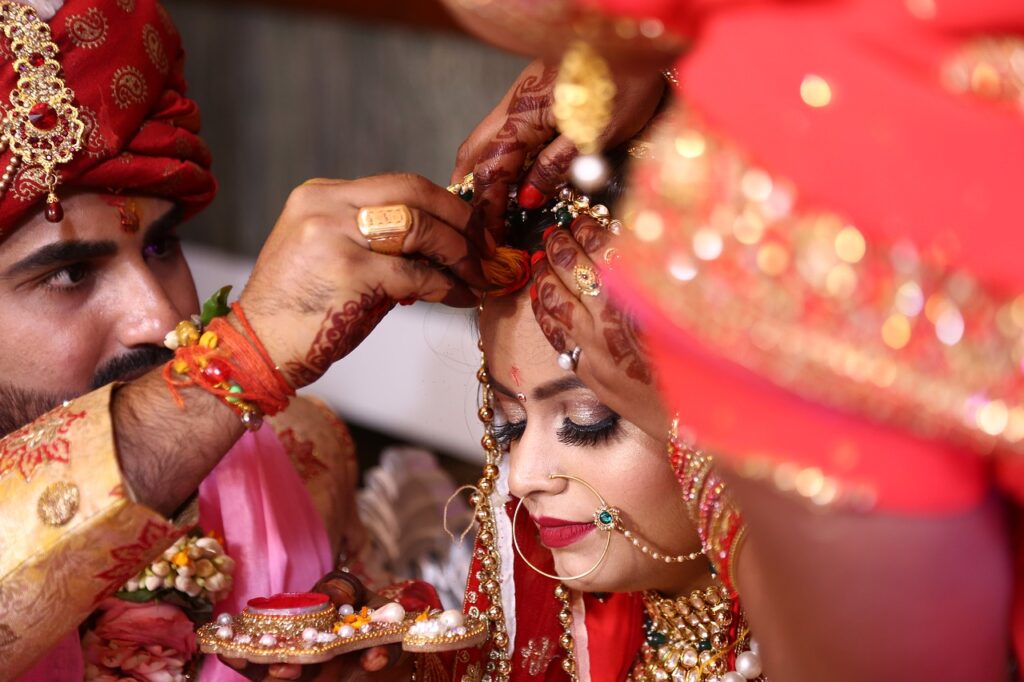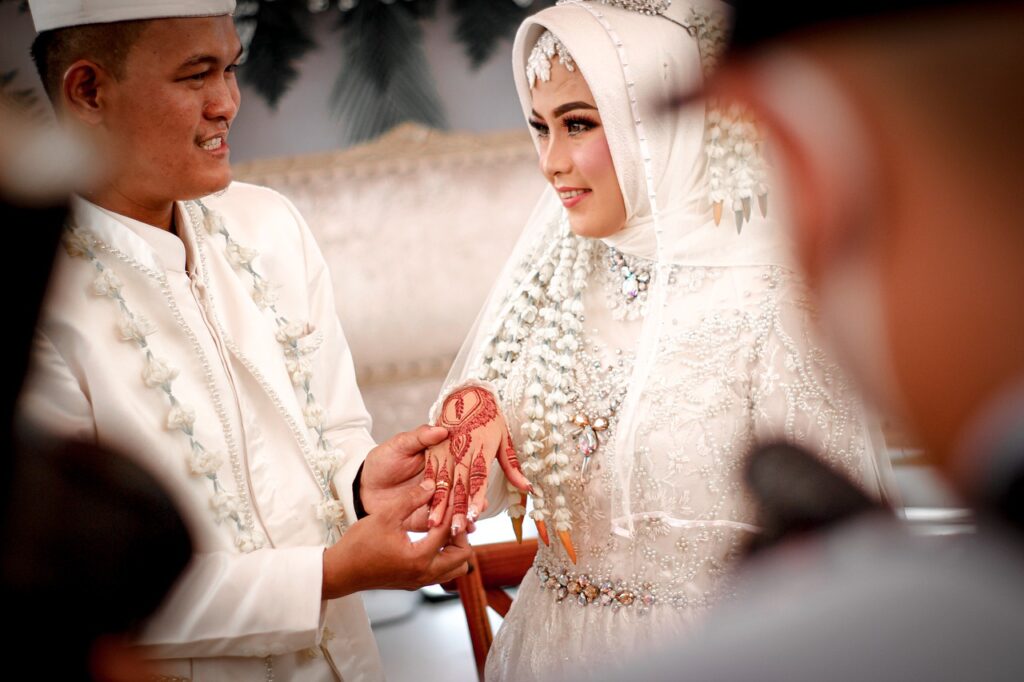The custom of tying a knot symbolizing eternal love and togetherness is an ancient practice that derives from many cultures and religions worldwide. Today, you can find an abundance of different wedding traditions practiced across the globe. They vary from country to country, and each tradition has its own story behind why it was started and how it is practiced. Whether you’re planning a destination wedding or sticking close to home, taking part in some of these traditions can make your big day more special and memorable.
 1. Muslim Wedding: Nikah Ceremony
1. Muslim Wedding: Nikah Ceremony
The Nikah (or nikah mut’ah) is a Muslim wedding contract with two witnesses and is notarized by an Islamic center. It can be concluded anywhere, be it at home or in a public place. A common practice that involves Nikah ceremonies is to conduct the signing of the marriage certificate after Friday prayers and then celebrate at a reception later that day or night. The wedding date and time are not considered necessary, so long as the woman has been married to only one man at a time. The Muslim wedding ceremony is usually celebrated in the afternoon with a large party to follow.
 2. Ethiopian Wedding: The Genna Ceremony
2. Ethiopian Wedding: The Genna Ceremony
The traditional Genna (or Chiro) ceremony typically takes over three days but may last much longer when there are many guests or an elaborate affair. It involves feasting, dancing, and singing in the form of “dabke.” Presents for the bride include clothing, jewelry, and household goods like plates and utensils. On the third day of festivities, the groom’s family will give her money in front of friends and family by placing it on her forehead while kneeling before them. On this same day, gifts are given to the families by the groom’s side, so both families are even at the end of the day.
3. Hindu Wedding: The Baraat Ceremony
The “Baraat” or groom’s arrival is when close family, friends, and relatives travel to the wedding location with an entourage of music players, dancers, singers, and sometimes animals to accompany him on his big day. A decorated car usually leads the way while inside. The groom drinks sherbet and is entertained by drummers until he reaches the ceremonial tent where traditional rituals occur in front of family members, priests, and witnesses. Once completed, the groom is asked if he takes his new wife home, to which he replies yes for them to be married officially in a Hindu ceremony which will happen later in the evening.
4. Serbian Wedding: The Slava and Vice Ceremonies
For Serbians, it’s not just one day of celebration but a whole week. First, there is the “Slava,” which involves a priest blessing all that belongs to the family, including houses, barns, and other buildings on land around them. A religious holiday follows a couple of days later, known as the “Vece,” where food and being together is what makes it so important. So basically, three things happen in Serbian weddings – the Slava, Vice, and the wedding ceremony where the groom takes his bride home.
5. Aboriginal Wedding: Unity in Nature
The Aboriginal wedding tradition of “Jumping the Broom” reflects a deep understanding of nature and a desire for a prosperous life. It is believed that if the broom is not jumped over, then the newlyweds will have a less than happy marriage. The custom itself is believed to have its roots with nomads in Africa who used brooms made from tree branches to sweep away their tracks as they traveled so as not to be followed by enemies. In Australia, Aborigines often use live plants instead of brooms because the bride and groom want to jump over new beginnings together.
6. Jewish Wedding: A glass is Broken
The breaking of a glass at the end of a traditional Jewish wedding ceremony is an example of how even something that seems utterly void of meaning can have a very significant history behind it. The story dates back to the 17th century when Jews from Eastern Europe were forbidden from owning property and couldn’t marry outside the community. In these times, weddings would take place over a weeklong affair in which everyone threw money at the bride and groom so they could start their new life together in financial security. At the end of a couple’s wedding ceremony, a glass would be placed on a table and smashed.
Each country has its traditions when it comes to weddings. Some are complicated, while others are simple. Some are full of symbolism, while some are plain and simple. Either way, each one is beautiful in its unique way. Whether you’re currently planning your wedding or looking forward to your special day in the future, learning about different cultures worldwide can give you ideas on how to make it more personal for you and your significant other. It’s essential to enjoy all that goes into making memorable moments with your partner, so feel free to incorporate any unusual customs discussed above.








